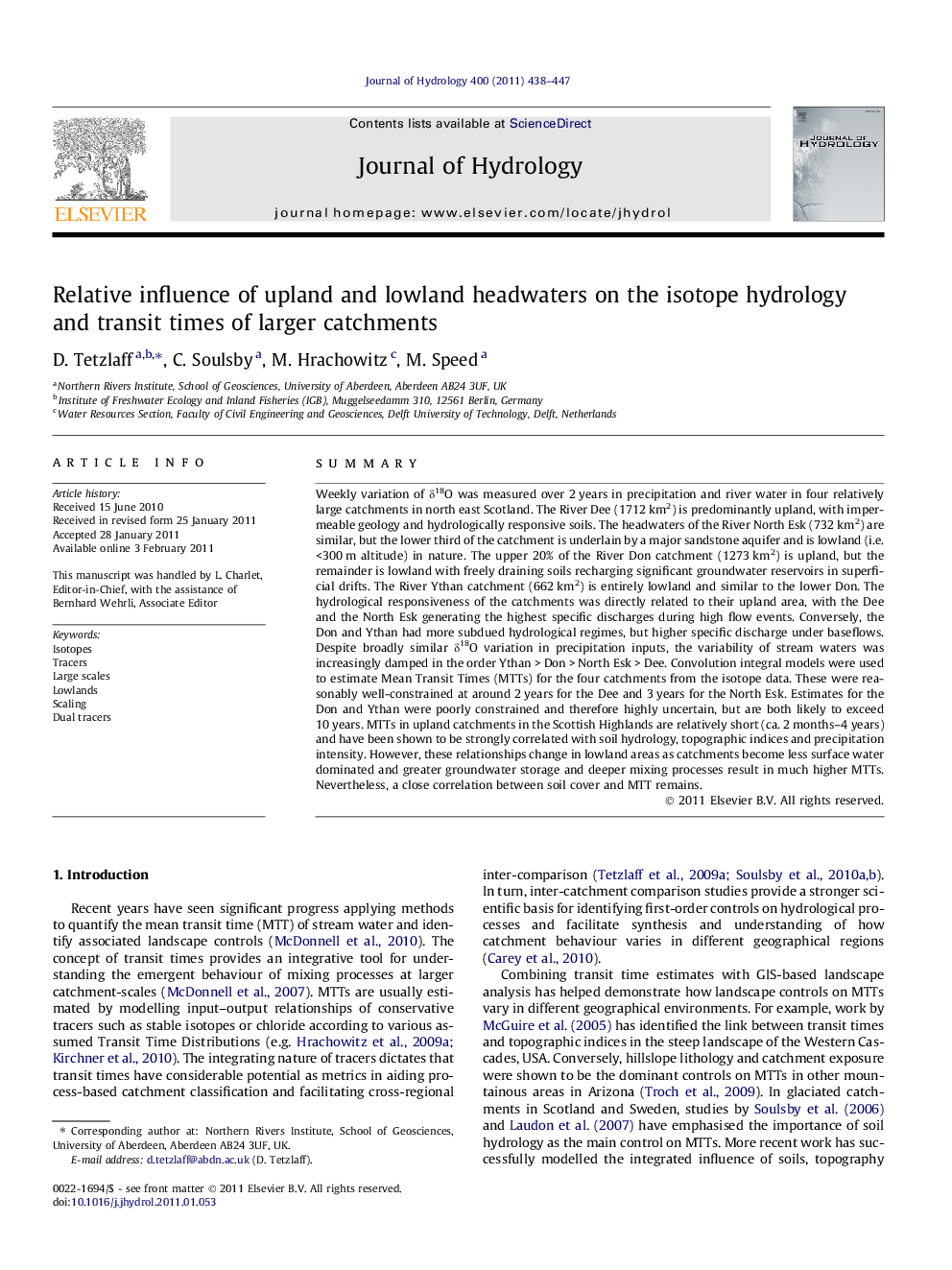| کد مقاله | کد نشریه | سال انتشار | مقاله انگلیسی | نسخه تمام متن |
|---|---|---|---|---|
| 4577739 | 1630027 | 2011 | 10 صفحه PDF | دانلود رایگان |

SummaryWeekly variation of δ18O was measured over 2 years in precipitation and river water in four relatively large catchments in north east Scotland. The River Dee (1712 km2) is predominantly upland, with impermeable geology and hydrologically responsive soils. The headwaters of the River North Esk (732 km2) are similar, but the lower third of the catchment is underlain by a major sandstone aquifer and is lowland (i.e. <300 m altitude) in nature. The upper 20% of the River Don catchment (1273 km2) is upland, but the remainder is lowland with freely draining soils recharging significant groundwater reservoirs in superficial drifts. The River Ythan catchment (662 km2) is entirely lowland and similar to the lower Don. The hydrological responsiveness of the catchments was directly related to their upland area, with the Dee and the North Esk generating the highest specific discharges during high flow events. Conversely, the Don and Ythan had more subdued hydrological regimes, but higher specific discharge under baseflows. Despite broadly similar δ18O variation in precipitation inputs, the variability of stream waters was increasingly damped in the order Ythan > Don > North Esk > Dee. Convolution integral models were used to estimate Mean Transit Times (MTTs) for the four catchments from the isotope data. These were reasonably well-constrained at around 2 years for the Dee and 3 years for the North Esk. Estimates for the Don and Ythan were poorly constrained and therefore highly uncertain, but are both likely to exceed 10 years. MTTs in upland catchments in the Scottish Highlands are relatively short (ca. 2 months–4 years) and have been shown to be strongly correlated with soil hydrology, topographic indices and precipitation intensity. However, these relationships change in lowland areas as catchments become less surface water dominated and greater groundwater storage and deeper mixing processes result in much higher MTTs. Nevertheless, a close correlation between soil cover and MTT remains.
Research highlights
► 4 large catchments differed in their percentage lowland area.
► Hydrological responsiveness was closely related to percentage of upland area.
► Variability of δ18O in stream waters was increasingly damped as higher percentage of lowlands.
► Mean Transit Times (MTTs) were poorly constrained in lowlands.
► Lowland areas are less surface water dominated with greater groundwater storage, deeper mixing processes and higher MTTs.
Journal: Journal of Hydrology - Volume 400, Issues 3–4, 11 April 2011, Pages 438–447